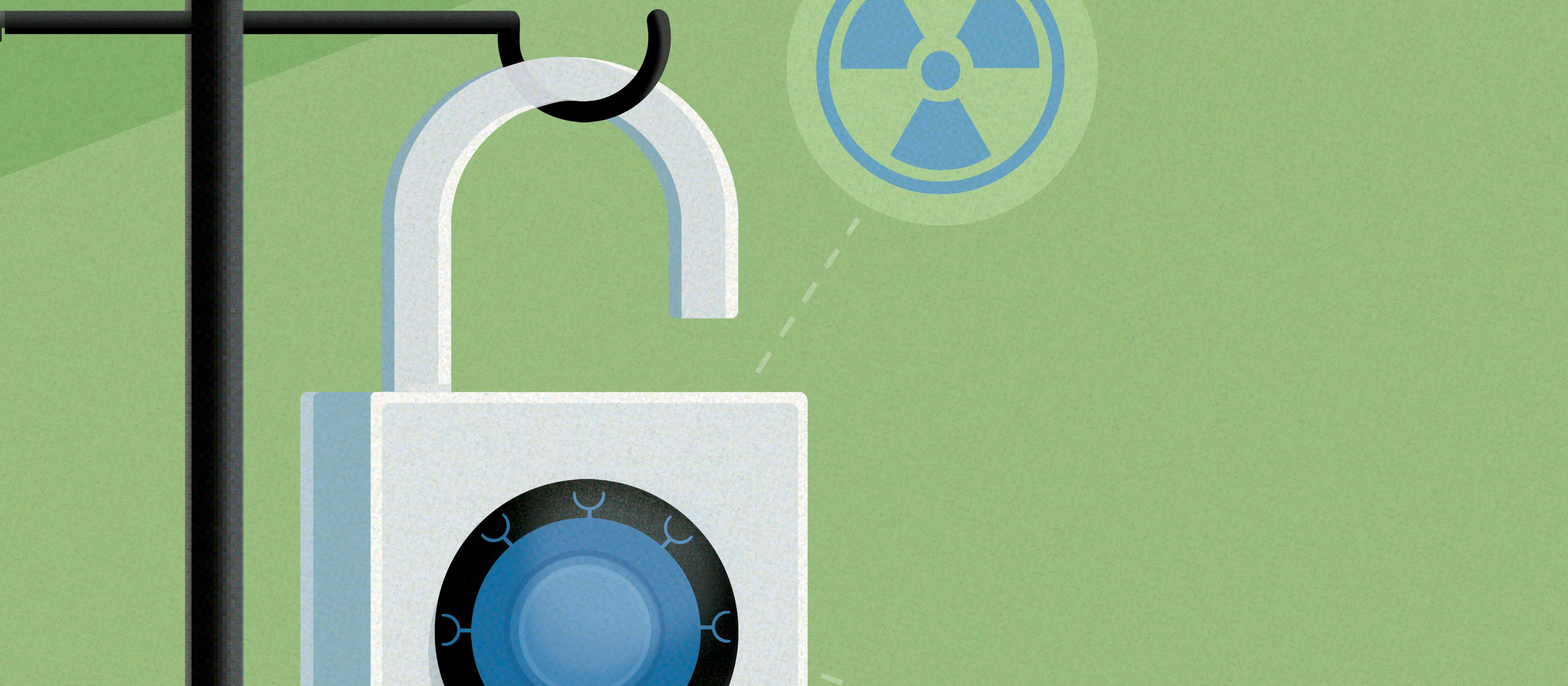Immunotherapies have revolutionized the approach to cancer treatment by leveraging patients’ own immune systems to fight the disease. But the novel therapies have also brought an evolution in traditional treatment regimens through their combination with chemotherapy, radiation, targeted therapy, or even other immunotherapy drugs.

The goal is to give patients the absolute best chance for optimal outcomes, but combination treatments require an even greater level of education for patients and assessment, vigilance, and care for oncology nurses. Understanding the therapies’ mechanisms of action enables nurses to promptly identify and properly manage symptoms and adverse treatment effects and provide the necessary education to keep patients safe and on treatment.
The Basis of Combination Immunotherapy
Combining immunotherapies with traditional treatment types may elicit a greater immune response from tumor sites and prevent treatment resistance. However, combination treatment plans can include a broad variety of types and styles.
According to ONS member Lisa Kottschade, MSN, APRN, CNP, nurse practitioner at the Mayo Clinic in Rochester, MN, and member of the Southeast Minnesota ONS Chapter, “Currently, immunotherapy—specifically immune checkpoint inhibitors (ICIs)—is approved with chemotherapy and with targeted therapy agents like sorafenib. Additionally, dual ICIs—specifically ipilimumab and nivolumab—have also received U.S. Food and Drug Administration approval for malignancies such as melanoma, colorectal cancer, and renal cell carcinoma.”
For ONS member Krista Rubin, MS, FNP-BC, nurse practitioner at Massachusetts General Hospital’s Center for Melanoma in Boston and member of the Boston ONS Chapter, combination immunotherapy treatment is a swiftly changing area of nursing practice.
“The main goal of combining ICIs with other anticancer therapies is to increase tumor immunogenicity. In other words, it’s improving the likelihood that the immune system will recognize a cancer. By increasing tumor immunogenicity and at the same time decreasing or blocking some of the immunosuppressive factors a tumor itself exhibits (tumor microenvironment), we can maximize treatment outcomes,” she says.
The approach is so promising that treatment options and indications are growing day by day.
“The list of approved combinations is increasing and includes chemotherapy, radiation therapy, targeted therapies, epidermal growth factors, and other immunotherapies as well,” Rubin says. “But if we tried to list all of them, it would be outdated in a matter of days or weeks. That’s how quickly this field is evolving.”

How Combination Immunotherapy Treatments Work
When immunotherapies are given in tandem with each other, they can have a synergistic effect where one agent primes the immune system and the other helps it locate and attack the disease.
“Multiple checkpoints work in different parts of the immune system,” Kottschade says. “Specifically, anti-CTLA4 agents work in the priming phase of the immune system to prevent the downregulation of T-cell activation. Anti-PD-1 and anti-PD-L1 agents work a little later in the immune system and prevent exhaustion of activated T cells, most notably in the tumor microenvironment.”
When chemotherapy is combined with immunotherapy, it may help the immune system identify a previously unrecognized tumor through tumor antigens.
“We’ve learned that chemotherapy can activate the immune system. We don’t always think of it that way because chemotherapy depresses the immune system, but as chemotherapy kills tumor cells, those dying cells release tumor-specific antigens,” Rubin says. “The antigens can then sabotage the tumor’s immunosuppressive factors. As it’s dying, those antigens call the immune system’s attention, allowing immunotherapy treatments work more effectively.”
When radiation and immunotherapy is combined, an interesting phenomenon known as an abscopal effect may occur.
“The abscopal effect is when a patient is receiving radiation to one area but also responds at a distant site. This has been seen repeatedly in patients being treated for melanoma. With the use of immunotherapies on patients with melanoma, reports of the abscopal effect have increased in the past several years,” Rubin says. “But it’s still mostly unknown and requires further study to really understand how the function works and its role in care.”
Nursing Considerations for Combination Treatments
Combining immunotherapy (specifically ICIs) with other immunotherapies or traditional treatments adds more complexity to the side-effect profile, meaning new challenges in patient care.
“For combination immunotherapy like dual ICI therapy, the risk for immune-related adverse events greatly increases. It requires nurses to be keenly aware and in constant communication with patients about all side effects,” Kottschade says. “When ICIs are combined with chemotherapy, it complicates the picture even further because side-effect profiles can overlap—for example, diarrhea—and depending on the offending agent, treatments are vastly different and can have serious consequences if the wrong one is given.”
Understanding side effects and adverse events during monotherapy for immunotherapy treatments is already challenging for nursing professionals, and combination treatments require nurses to have an even deeper knowledge of all involved drugs, how they affect patients, and how to assess for potential adverse events.
“The toxicity profile for single ICIs is vast enough. When they are combined with other therapies, it becomes even more difficult to track and understand. Nurses need to have a fundamental understanding of the mechanisms of action for immunotherapy to have a solid base to work from,” Rubin says. “Many malignancies have specific, unique toxicities. Pneumonitis, for example, is more common in patients with lung cancer receiving anti-PD1 than it is for those with melanoma. If you’re a nurse who sees patients with many different cancer types, it’s those little nuances that make it challenging to know how to manage or anticipate who may be a greater risk.”
Kottschade and Rubin agree that nurses must stay current with approved immunotherapies and their combination indications. As patient-focused providers, nurses must advocate for professional development, continuing education, and immunotherapy-based resources to inform their practice.
The Need for Patient Education and Advocacy
With the unique side-effect profiles associated with immunotherapies and combination treatments, nurses must actively teach patients and caregivers about the importance of self-assessment and immediate intervention.
“Patient education is key. Family members, caregivers, and patients must be knowledgeable about the symptoms and side effects to watch for and the need to contact their oncology team for symptom management,” Kottschade says. “Many patients may be afraid to tell providers they’re experiencing side effects because of concern about being taken off their treatment. They need to know that the earlier a side effect is recognized and treated, the more likely they will be able to stay on their therapy. Nurses can help them understand that delays in adverse event treatment significantly increases the risk of severe side effects and permanent discontinuation of their therapy.”
As new combination treatments are seen more commonly in practice, oncology nurses have an expanded role in patient care.
“Nurses can really stand out through patient advocacy and speaking up for the needs of their patients,” Rubin says. “With combination treatments, we need to make sure patients understand the need to communicate with their team. For example, in metastatic melanoma, combination ipilimumab and nivolumab is firstline treatment. The regimen is associated with a 50% or greater risk of high-grade toxicity. Successful outcomes depend on the establishment of therapeutic nurse-patient relationships, early identification of real or perceived barriers to care, and excellent communication skills.”
The Future of Combination Immunotherapy
One thing is certain: immunotherapy will continue to change cancer care. As treatments evolve and the evidence base grows, more agents will be approved for expanded indications and in tandem with other drugs.
“With the success of immunotherapy in the metastatic setting, we can expect to see further advancement in the adjuvant and neoadjuvant settings,” Kottschade says. “Harnessing the immune system has revolutionized the treatment of cancer. But as with any new treatment, it comes with a different paradigm of side effects and adverse events. Nurses are on the front line for patients and need to provide education, regular assessment, and swift interventions for novel combination treatments and the adverse events associated with them.”
Rubin and Kottschade say that adapting to new treatment paradigms gives nurses the opportunity to advance practice. Combination immunotherapies are just another opportunity for oncology nurses to share their voice in the conversation and take their seat at the table.
“It’s an exciting time. We’re seeing many patients have success with combination immunotherapy treatments,” Rubin says. “This is a chance for the nursing community to really shine by providing that excellent, expert-level care that’s necessary for patients with complex treatment regimens. Nurses are on the front lines with their patients, and this is the perfect opportunity to show our influence and impact in improving patient outcomes.”






